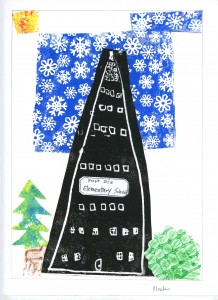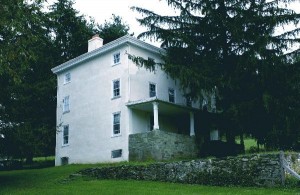Imagining a future for historic house museums, Part 1
18 May 2015 – editors
methods, public engagement, sense of place, interpretation, The Public Historian, historic house museums
We think we can all agree on two things: we love historic house museums, and we want them to have a future. That is where consensus in the field starts and stops. Although rumors of their demise are indeed premature, there is no question that house museums are in crisis, in desperate need of new audiences, new leadership, new sources of support, and most urgently, new purpose. We believe all of these needs can be met and that we are moving towards clarity about how this might be achieved, not through grand policy agreements but mostly through small-scale experiments at individual sites that are proving to be highly effective. The down side–sometimes these interventions can be highly disruptive and highly nerve-wracking.
In our work as public historians in the Philadelphia area, we have witnessed one fundamental element at all successful house museums–willingness to change and change big. The change isn’t formulaic. One size definitely doesn’t fit all. Each site has unique content, a unique neighborhood, a unique historical context, unique stories, unique collections, unique staff. But we have seen some COMMONALITIES among these changes, all of which have played out in DIFFERENT ways. For our organizations to be open to change, we who work in this field must be open to change ourselves and changing ourselves, a most excruciating leaving of familiar territory. We must let the old model of the house museum die, and our attachment to its sensibilities and values die with it. RIP nostalgia, charm, safety, blind patriotism, childhood memories, personal entitlement, and more. It’s time to leave these old houses and let the screen door slam on our way out! And in their place, we welcome a whole new set of exhilarating, challenging, and sometimes discomfiting approaches that will require us to rethink our organizational missions and remake ourselves as museum professionals. We have seen this happening in the Philadelphia region, and there is a lot to be excited about.
Although not formulaic, the spirit of experimentation that we have admired in our region has offered a variety of ways forward which we have noticed seem to fall into certain strategic categories. Many of the projects we have supported in the last few years have adopted these approaches:
- Working with contemporary artists of all disciplines
- Meeting unique community needs
- Facing difficult and controversial subject matter
- Effective/thoughtful use of technology
- Playing with games and gaming
Working with contemporary artists of all disciplines
At the Brandywine River Museum, perhaps best known for its collections of work by the Wyeth family of artists, the program staff has been considering how to interpret one of the museum’s historic properties, Kuerner Farm. The farm and farmhouse had belonged to neighbors of the Wyeths and was a significant site of inspiration for Andrew’s work. The staff invited sound artist Michael Kiley to create a short piece that visitors to the site experienced in addition to the regular tour activities. The goal was to draw attention to the creative process of the artist (in a way that echoed but didn’t try to re-create Wyeth’s use of the site for inspiration) and to enhance the multi-sensory aspect of visiting the farm.
We’ve also been privileged to be participant-observers in a working group that brought together professionals interpreting historic places with dance artists and choreographers. This exchange asked both groups to share their expertise and their “ways of knowing” with one another and led to some remarkable, embodied investigations of historic sites. Some of the group members continue to work together, and we’re confident their partnerships will eventually lead to interpretations that will allow visitors new ways of experiencing historic spaces.
Meeting unique community needs
Historic houses have resources that can be leveraged to make an impact in particular communities. We’ve seen examples of organizations that listen to their neighbors or communities to identify the needs of those groups and think deeply about the specific resources they can offer. The result is programming that can be deeply meaningful to those audiences.

Art produced by a young participant in the Rosenbach program “War Stories: Hard Earned, Unforgettably Told”. Photo credit: Rosenbach Museum and Library
The Rosenbach Museum & Library identified veterans as a new audience. Although the museum staff members had limited interaction with this community in the past, they felt that their resources might be meaningful to veterans if made accessible to them. They initiated the project “War Stories: Hard Earned. Unforgettably Told,” which connected student veterans and the children of enlisted service members with their collections of historic wartime letters. The project participants engaged in writing, conversations, and interviews that allowed them to make connections between their experiences and those of the historic letters.
A project currently in the planning stages by Historic Germantown’s collaborative of historic houses and sites will engage this diverse neighborhood in facilitated conversations which hope to expose hidden tensions about race and class in Germantown’s history and present.
In Part 2 of this post, we will describe more projects that engage with difficult or controversial subject matter like this.
~ Bill Adair and Laura Koloski are public historians in the Philadelphia region. They are the co-editors, with Benjamin Filene, of Letting Go? Sharing Historical Authority in a User-Generated World (Left Coast Press, 2012).





